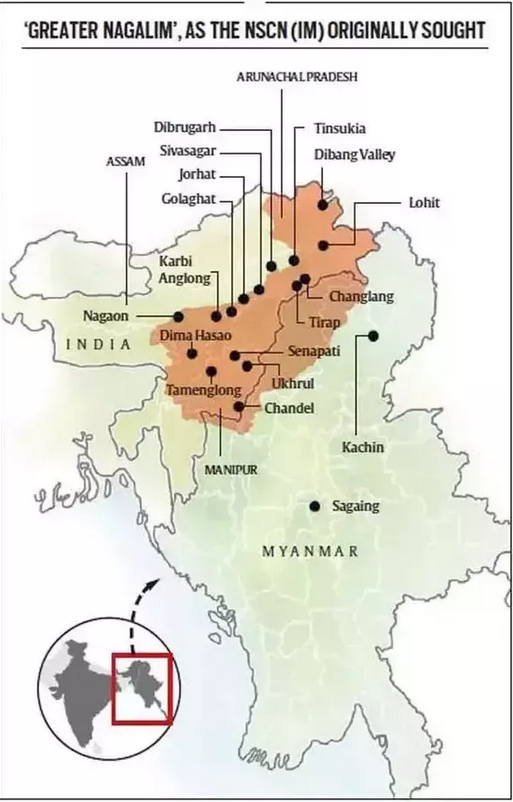
Prepare IAS Coaching
Current Affairs

Title : NAGA INSURGENCY: What & Why
Date : Dec 07, 2021
Description :
GS III
Topic à Internal Security related topics
- What is the Naga Peace Process, and what does it entail:
- Associated Problems:
- Since 1997, the Indian government has been in talks with Naga rebel groups, particularly the NSCN(IM), with the goal of signing a Naga Peace Accord.
- The Naga insurgency, which is rooted in Naga nationalism, is one of the country's oldest insurgencies.
- The Naga-populated territories of the Northeast never regarded themselves to be part of British India, and the Naga National Council (NNC) declared Nagaland independent on August 14, 1947.
- In 1952, it established an underground government (NFG) and an army, prompting the Centre to dispatch the army and implement the Armed Forces (Special) Powers Act, or AFSPA.
- Shillong Accord:
- After years of negotiations, the Shillong Accord was struck in 1976 with Nagaland's underground factions.
- Many top NNC officials, however, rejected it, claiming that it did not address Naga sovereignty and obliged Nagas to adopt the Indian Constitution.
- The Naga organisations have since splintered into separate factions.
- The Peace Accord:
- Nearly 100 rounds of negotiations have taken place.
- The organisation and the Indian government signed a framework agreement for the Naga Peace Accord in August 2015.
- What went wrong, and how did it happen:
- According to sources, even the accord's different competencies had been agreed upon, albeit a few stumbling blocks remained.
- The factions were adamant about having a Naga constitution and lobbying for a Greater Nagalim that would extend beyond the current Nagaland state's borders.
- The state council flatly refused to recognise a separate flag and constitution, warning that "any misadventure to fragment our magnificent nation shall not be accepted."
- What are the fundamental issues in the midst of all of this:
- The excitement with which the framework agreement was revealed led to unrealistic hopes of a quick agreement.
- A separate constitution for Nagaland would be unacceptable to the administration. This was never a point of contention.
- There was a consensus that the flag should be awarded.
- However, after the Kashmiri flag was removed on August 5, 2019, that option was no longer an option.
- The most effective path forward:
- It is critical to recognise that an agreement cannot be reached without the participation of militant groups.
- One demand is for a bicameral Assembly with at least 40 nominated members representing different tribes; another is for cadres to be absorbed into local armed forces or the Indian paramilitary.
- The establishment of autonomous councils in Naga-dominated areas of neighbouring states, as well as the use of the Naga flag for at least customary events, are both necessary.
- Source à The Hindu à 06/12/21 à Page Number 8
